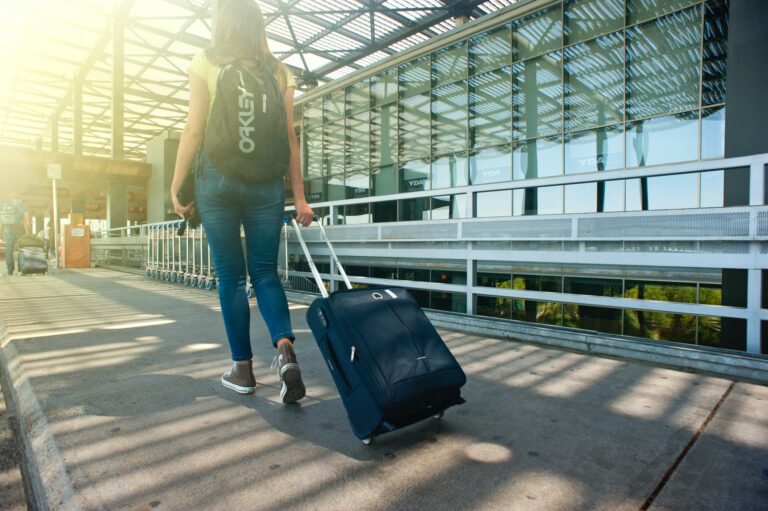Customer reward programs have been around a long time: in fact, the earliest example may well be Betty Crocker, which, in 1929, introduced the idea of using box-tops as coupons to encourage repeat purchases. Since then, just about every major company—and a great deal of small ones to boot—have made use of some kind of system for this purpose. As the decades have progressed, these systems have morphed into the loyalty programs we see today, wherein customers are awarded a kind of elite member status for their patronage.
One industry that has especially relied on these membership programs is air travel. Beginning with American Airlines in 1981, just about every airline now offers some kind of frequent flier program. (Rewards for frequent fliers actually existed before then, but the idea of accruing points towards future flights didn’t come to fruition until American tried it.)
Indeed, these airlines offer a number of rewards for frequently using their services—services that now include branded credit cards that allow users to collect points for their regular, everyday purchases—not just the ones for travel—as well as affiliated car rental and lodging. Rewards include everything from free trips to upgraded flight status, and many major airlines operate airport lounges as well, where members enjoy a number of included amenities. These rewards help ensure customer retention, and are a great way to reward their best customers.
A Big Drop-Off
But we’ve now entered into what Mark Ross-Smith, the CEO of loyalty-program consultancy, calls the “downgrade apocalypse.” As detailed in a recent article in the Wall Street Journal, “About 20 million U.S. travel loyalty program members had their status downgraded” in the last quarter, which “includes people who were members of two or more programs, including ones with hotels and other travel providers.” The reason for this is that the travel industry “initially made it easier to secure and maintain status in their loyalty programs in the wake of the pandemic. They granted free extension to people who had high levels of status, with the number of fliers in elite tiers ballooning as a result.”
Consequently, many travelers are finding the requirements for maintaining that elite status too difficult or not worth the effort since they can often find better deals by simply shopping around rather than dealing with the headaches.
Shrinkflation Hits Air Travel, Too
Headaches go beyond steep requirements. Just as the dreaded shrinkflation has shrunk the number of chips you get in a bag at the grocery store, many longtime frequent fliers are seeing their points add up to less and less. Anecdotally, trips that once cost x-amount of miles now cost double or worse. Much of this has to do with inflation, which has caused everything to substantially more than it did a few years ago.
One flyer reported that he accrued 2.5 million miles prior to the pandemic. But he says, “I could burn half my back account of miles on one trip,” adding, “I get that’s what they’re for—but holy cow, that’s a lot.” No wonder so many are choosing to downgrade themselves, given the worsening return on investment.
Hoops to Jump Through
This is all aggravated by the difficulty in even using those perks. According to a director at a Pittsburgh-based travel agency, “upgrad[ing] to better seats [has] become increasingly difficult.” Further, other amenities like airport lounges “can be packed enough that jet-setters must wait in lengthy lines for a chance to grab free drinks and a spot to relax before a trip.”
The reason for this is the record-level of memberships the airlines artificially inflated in response to the pandemic. This has resulted in packed flights and with fewer opportunities for “getting an upgrade to first or business class.”
As travel editor Kyle Potter remarked, “Increasingly, the juice is not worth the squeeze anymore.”
Learning from Mistakes
What lesson can we glean from the airline industry’s struggles? Obviously, they couldn’t have anticipated the global pandemic, but the decision to open the floodgates to their elite memberships has actually resulted in an across-the-board devaluation of those very reward programs. Many of their longtime customers saw the value of their memberships diluted by skyrocketing air-mile costs, long lines for amenities, and ongoing challenges for even booking trips with their perks. Why bother with the trouble of maintaining your membership status if you can’t enjoy it anyway?
So, an industry-wide contraction on the number of memberships is necessary, but the airlines have erred because they’re also going to shed their once-loyal members as well. By cutting off their nose, they’re spiting their face. They would’ve been wiser to institute the higher qualification requirements but keep their perks as valuable as ever—considerably wiser still to have never made this mistake in the first place.
Perhaps that seems like an easy criticism with the benefit of hindsight. Even so, the airlines could have avoided these mistakes by simply prioritizing their best, most loyal customers; if they had done that, they would’ve quickly realized that stuffing their memberships rolls benefited no one in the long run. After all, the first and most important product of any company is its customer service. Whom are they really serving with that mistake?
Do you feel the same way about the importance of customer service? Have you been thinking about how to implement a rewards program within your own business? And did you know that The Brandt Group has specialized in helping our clients maximize their customer experiences with streamlined sales and service processes, staff training, and, yes, even loyalty programs, for more than 30 years? Now is the time to learn more, to take advantage of the many customers out there in search of companies worthy of their loyalty. Why don’t we win them over together?




Recent Comments